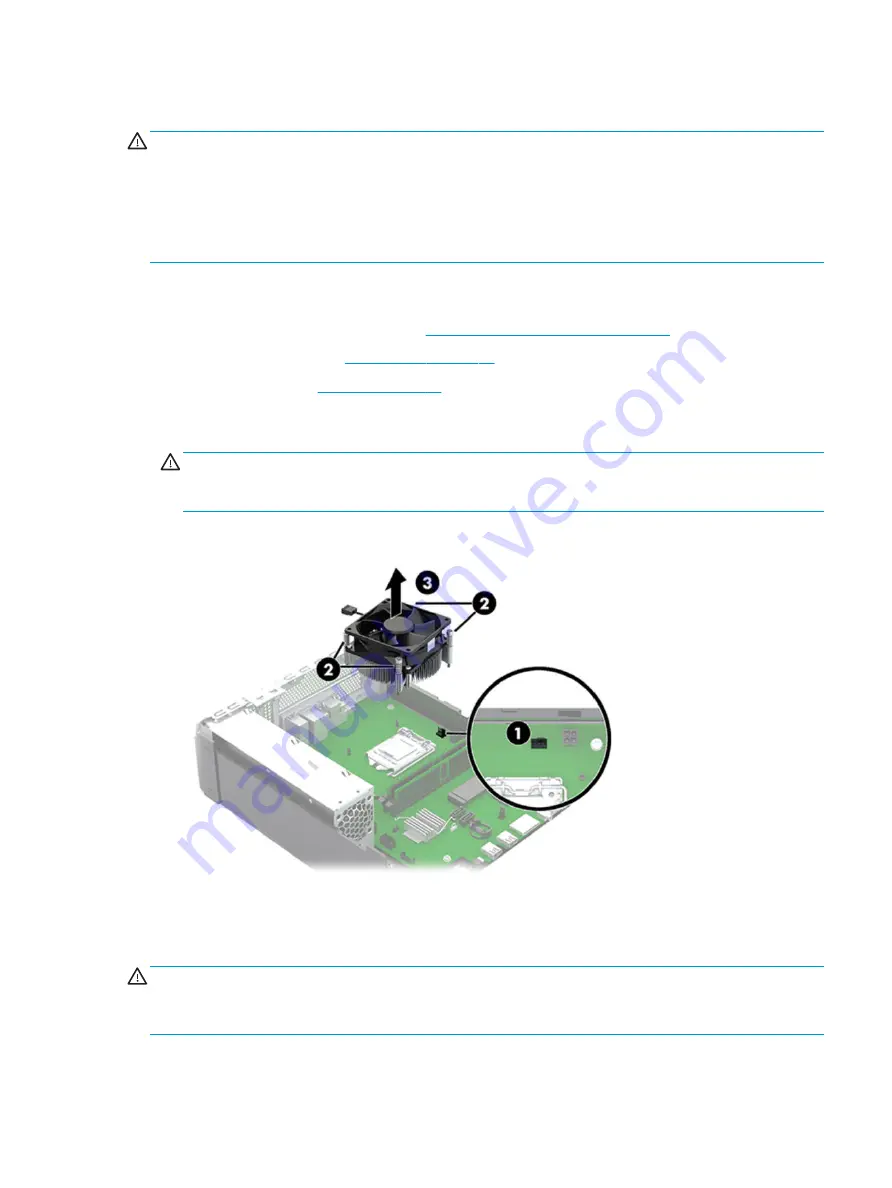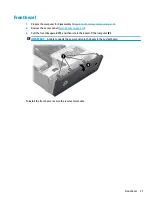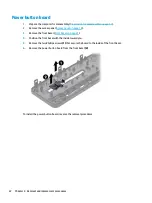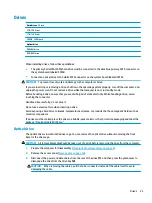
Fan sink
CAUTION:
The bond between the fan sink and the processor may be very tight.
If the computer will power on, before removing the fan sink, turn on the computer until it warms the fan sink.
Warming the fan sink lessens the bond between the heat sink and the processor, thereby making separating
them easier.
Make sure not to pull the processor out of the socket when you lift the fan sink, especially if you cannot warm
the fan sink prior to removal. Inadvertently removing the processor can damage the pins.
The fan sink is secured atop the processor with four captive Torx screws. The fan sink includes a heat sink and
a fan.
1.
Prepare the computer for disassembly (
Preparation for disassembly on page 15
).
2.
Remove the access panel (
3.
Remove the fan duct (
).
4.
Disconnect the fan cable from the system board (1), and then loosen the four captive Torx T15 screws
(2) that secure the fan sink to the system board tray.
CAUTION:
Remove fan sink retaining screws in diagonally opposite pairs (as in an X) to even the
downward forces on the processor. This is especially important as the pins on the socket are very fragile
and any damage to them may require replacing the system board.
5.
Lift the heat sink from atop the processor (3).
To install the fan sink, reverse the removal procedure.
When reinstalling the fan sink, make sure that its bottom has been cleaned with an alcohol wipe and fresh
thermal grease has been applied to the top of the processor.
CAUTION:
Fan sink retaining screws should be tightened in diagonally opposite pairs (as in an X) to evenly
seat the fan sink on the processor to avoid damage that could require replacing the system board.
Make sure to replace the fan duct. Failure to install the fan duct may cause the computer to overheat.
Fan sink
33















































